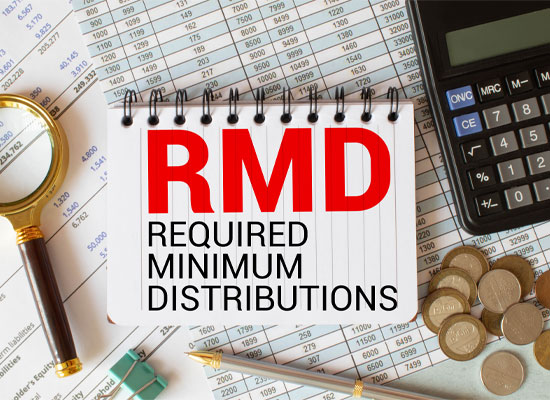 Contact
About Us
Articles
Home
Contact
About Us
Articles
Home

After decades of disciplined saving, you and your spouse have built substantial retirement accounts. Then the IRS steps in with a mandate: You must start withdrawing specific amounts annually or face steep penalties. These required minimum distributions (RMDs) aren't just a tax obligation — they're a strategic crossroads that can either preserve or diminish your lifelong savings.
For married couples, the stakes are especially high, as these withdrawals affect not just your individual finances but your shared retirement dreams. The difference between an optimized RMD strategy and a haphazard approach can translate to tens of thousands of dollars over your retirement years and significantly impact the legacy you leave behind.
RMDs are mandatory withdrawals from retirement accounts that the IRS requires once you reach a certain age. Starting in 2023, thanks to the SECURE 2.0 Act, the age when RMDs must begin increased to 73. It will further increase to age 75 in 2033. These mandatory withdrawals apply to traditional IRAs, 401(k)s, 403(b)s, and other tax-deferred retirement accounts, but not to Roth IRAs during the original owner's lifetime.

For married couples, each spouse must take RMDs from their own retirement accounts based on their individual age and account balances. There's no joint RMD calculation - even for couples who file taxes jointly.
Surviving spouses have unique privileges when inheriting retirement accounts that non-spouse beneficiaries don't enjoy. These include:
Non-spouse beneficiaries generally must empty inherited retirement accounts within 10 years following the SECURE Act changes (with some exceptions for eligible designated beneficiaries).
Each spouse must begin taking RMDs based on their own age, regardless of their partner's age. This creates planning opportunities for couples with age differences.
For traditional IRAs, 401(k)s, and most other retirement accounts, RMDs must begin by April 1 of the year following the year you turn 73 (for those born between 1951-1959). For those born in 1960 or later, RMDs must begin at age 75.
For subsequent years, RMDs must be taken by Dec. 31 of each year. Taking your first RMD in the year you turn 73 is often recommended to avoid taking two distributions in the following year.

Each spouse calculates their own RMD using:
The formula is simple: Account Balance ÷ Life Expectancy Factor = Required Minimum Distribution
For example, if a 75-year-old has $500,000 in an IRA and the applicable life expectancy factor is 24.6, their RMD would be $20,325 ($500,000 ÷ 24.6).
Smart planning can help married couples manage their RMD tax burden:
When a spouse passes away, the surviving spouse has several options for handling the deceased's retirement accounts:
The surviving spouse can treat the IRA as their own by designating themselves as the account owner or rolling it into their own IRA. This is often advantageous for younger surviving spouses as it allows them to delay RMDs until they reach the required age.
Alternatively, they can remain a beneficiary of the account. If the deceased spouse had already begun taking RMDs, the surviving spouse must continue taking at least the required distributions.
For employer plans like 401(k)s, the options may vary based on plan rules. Some plans may require the account to be distributed or rolled over to an IRA.

RMDs are generally taxed as ordinary income, which can push couples into higher tax brackets. RMDs can also affect other tax-related items:
Tax planning becomes particularly important in the year one spouse passes away, as the surviving spouse will typically file as single in subsequent years, potentially facing higher marginal tax rates.
The penalties for failing to take RMDs can be severe. Prior to the SECURE 2.0 Act, the penalty was 50% of the amount not withdrawn. Beginning in 2023, this penalty was reduced to 25% and can be further reduced to 10% if the error is corrected in a timely manner.
For married couples, it's crucial that each spouse tracks their own RMD requirements. Even if one spouse has taken their required distribution, the other spouse must still take theirs based on their own age and account balances.
To avoid penalties, consider setting up automatic distributions or calendar reminders. Many financial institutions can calculate your RMD amount, but the ultimate responsibility for taking the correct amount rests with you.
Managing RMDs successfully requires thoughtful planning and coordination between spouses. While these mandatory withdrawals can't be avoided, they can be handled strategically to preserve your retirement savings and minimize tax impacts. By understanding the unique rules that apply to married couples and implementing appropriate strategies — whether through spousal rollovers, qualified charitable distributions or Roth conversions — you can transform this tax obligation into an opportunity for financial optimization.
Consider working with a qualified financial professional who specializes in retirement income planning to create a personalized strategy that aligns with your shared goals. With proper planning, you can ensure that the wealth you've built together continues to support your retirement lifestyle and provides for your loved ones long after you're gone.
Alliance America is an insurance and financial services company dedicated to the art of personal financial planning. Our financial professionals can assist you in maximizing your retirement resources and achieving your future goals. We have access to an array of products and services, all focused on helping you enjoy the retirement lifestyle you want and deserve. You can request a no-cost, no-obligation consultation by calling (833) 219-6884 today.


